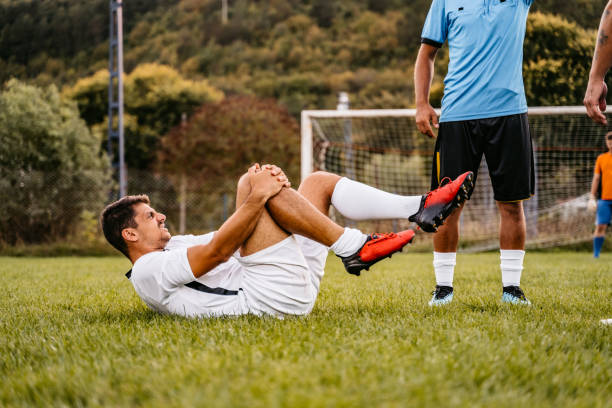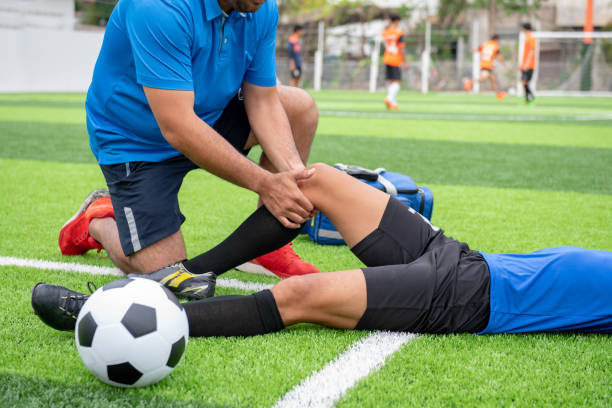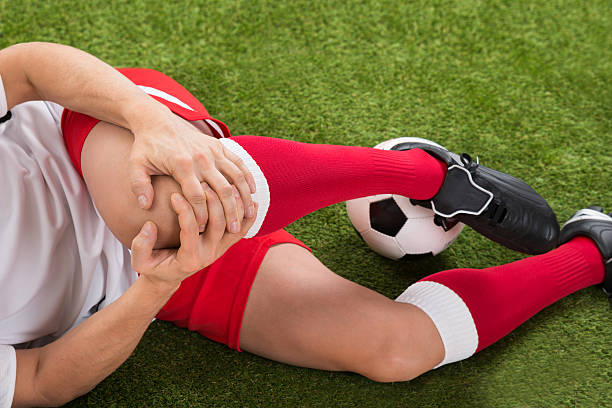In the exciting world of football, the passion for the game is combined with the responsibility of staying fit and injury free. This article immerses you in the crucial topic of soccer injury prevention, revealing how to keep your body in its best condition to fully enjoy the sport you love. You’ll discover valuable tips, effective strategies, and specific approaches to preventing common soccer injuries.
Whether you’re a player looking for optimal performance or a passionate follower of the sport, here you’ll find essential information to keep players on the field and excitement in the game. Welcome to a journey towards safer and longer-lasting football!
Importance of injury prevention in Soccer
The importance of injury prevention in soccer goes beyond keeping players on the field; It is essential to ensure constant performance and the safety of athletes. In a dynamic sport like soccer, where speed, changes of direction and collisions are common, injuries can occur at any time.
Preventing injuries in soccer not only prevents pain and pauses in a player’s career, but also contributes to the success of the team. A fit and injury-free player can fully contribute to the team’s strategy and maintain consistent performance.

IMPORTANT:
It is very important to be aware that a bad injury can end a player’s career.
Additionally, preventing soccer injuries saves time and resources on medical treatments and rehabilitation. It also protects developing young players, allowing them to forge a solid career in the sport. The vast majority of football campuses prepare their players to prevent as many injuries as they can.
Stay fit and avoid injuries: key tips
Staying fit and avoiding injuries is a priority for footballers, as good physical condition not only improves performance but also reduces the risk of injury. To achieve this balance, it is essential to consider several aspects:
A balanced training program
This should include strength, endurance, speed and flexibility exercises to strengthen muscles, ligaments and tendons, providing a solid foundation for the game. Additionally, before each training session or match, performing a proper warm-up and stretching can prevent muscle injuries and improve flexibility.
The nutrition
Nutrition also plays a vital role in preventing injuries in soccer. A balanced diet with sufficient protein, carbohydrates and micronutrients provides energy for performance and aids recovery. Adequate rest is crucial to allowing the body to recover, so make sure you get enough sleep and give your muscles time to recover.
Listening to your body is essential
Pay attention to signs of pain or discomfort, and don’t ignore them. If necessary, consult a health professional or physical therapist. Furthermore, knowing and applying the appropriate techniques and tactics is essential to avoid unnecessary collisions and risk situations.
By taking care of your physical condition and following these tips, you will be in a strong position to enjoy football safely and effectively. Maintaining a balance between training, nutrition and recovery is key to optimal performance and injury prevention in soccer.

Common soccer injuries and how to avoid them
Soccer is a very contact sport, especially at the professional level. There are multiple reasons why you could get injured, it could be due to physical negligence, poor contact when playing, not warming up, strong blows, etc. What is true is that there are some injuries that predominate among all players, some of these are:
knee injuries
Knee injuries are a common concern in soccer due to the physical demands of the sport. Anterior cruciate ligament (ACL) and meniscus injuries are especially common. Poor technique when turning or jumping, or collisions with other players, can damage these structures.
Knee injuries can be painful and require long periods of rehabilitation. Prevention is key, and players should focus on muscle strengthening and proper technique. It is also essential to listen to your body and seek medical attention if you experience knee discomfort to avoid complications and promote proper recovery.
Ankle injuries
Ankle injuries are common in soccer due to rapid movements, changes of direction and constant contact with other players. Ankle injuries often involve sprains, where the ligaments supporting the ankle are stretched or torn. These injuries can cause pain, swelling, and limitations in movement, which can affect a player’s performance.
To prevent ankle injuries, players should focus on strengthening the leg and ankle muscles, wearing proper, supportive footwear, and practicing proper technique when dribbling and changing direction. Additionally, rehabilitation after an ankle injury is essential to ensure a full recovery and prevent future injuries.
Statistics and risks of injuries in Soccer
Soccer injury statistics and risks are an important part of understanding the magnitude of this problem in the sport. Injuries can have a significant impact on players’ performance and career. Some key data reveals that musculoskeletal injuries, such as knee, ankle and thigh injuries, are the most common in football. Additionally, studies suggest that most injuries occur during matches rather than training.
Risk factors include age, field position, poor technique, excessive training load and fatigue. Prevention and early care are essential to mitigate these risks. Understanding these statistics allows players, coaches, and healthcare professionals to focus on effective strategies to minimize injuries and ensure long-term safety and performance in soccer.
What happens if a player is injured?
When a player is injured in soccer, it is essential to take immediate action to ensure proper care and effective recovery. The typical process includes:
- Immediate Evaluation: The injured player must be evaluated on the field by a medical professional or coach. This helps determine the severity of the injury and whether additional medical attention is needed.
- On-Site Treatment: Depending on the injury, first aid techniques such as bandages, ice or immobilization may be applied.
- Removal from the Field: If the injury is serious, the player may be removed from the field and transported to the locker room or a designated medical area.
- Medical Evaluation: A doctor or physical therapist will perform a more detailed evaluation to determine the extent of the injury and create a treatment plan.
- Rehabilitation: Rehabilitation is key to recovery. It may include strengthening exercises, physical therapy, and rest time.
- Gradual Return: The player should not rush back into the game. A gradual return process should follow, ensuring that the injury is completely healed.
- Prevention of Future Injuries: Changes in technique or strengthening programs can be implemented to reduce the risk of future injuries.
Prompt and appropriate injury care is essential to ensure a full recovery and minimize the long-term impact on the player’s career.

